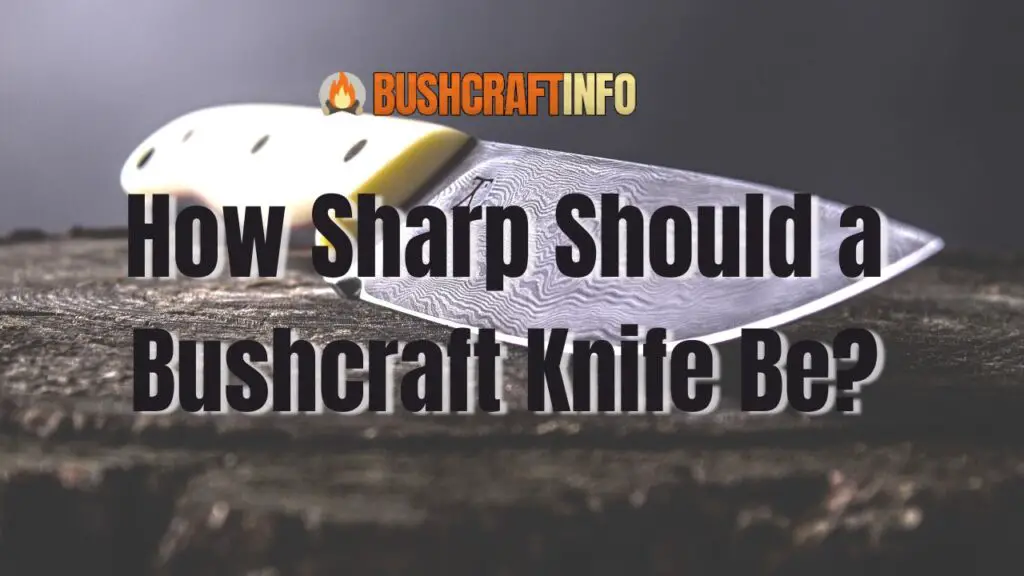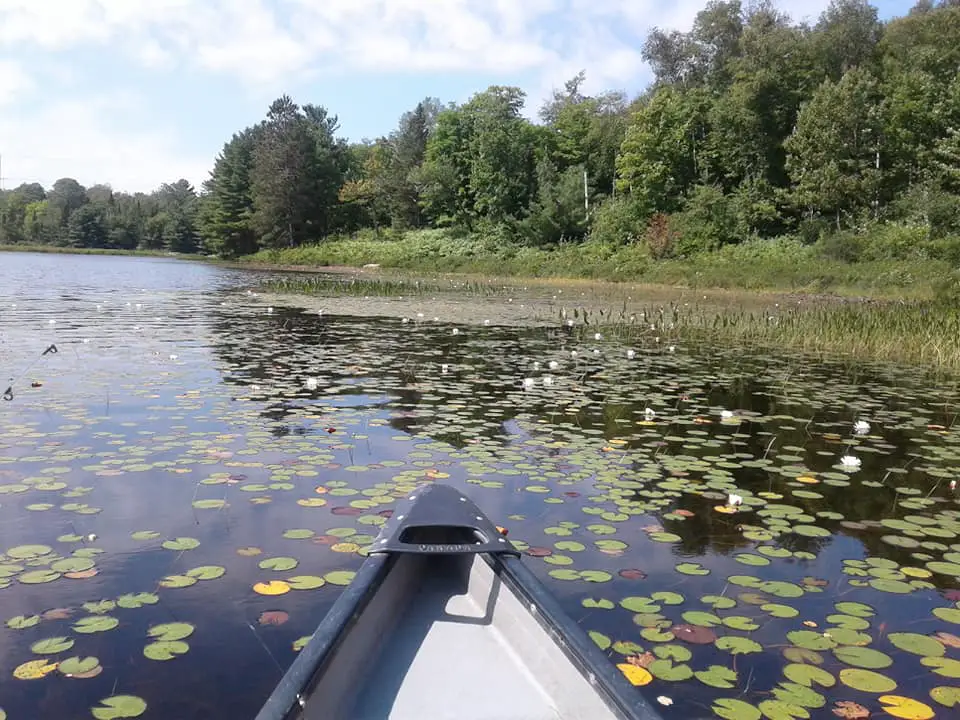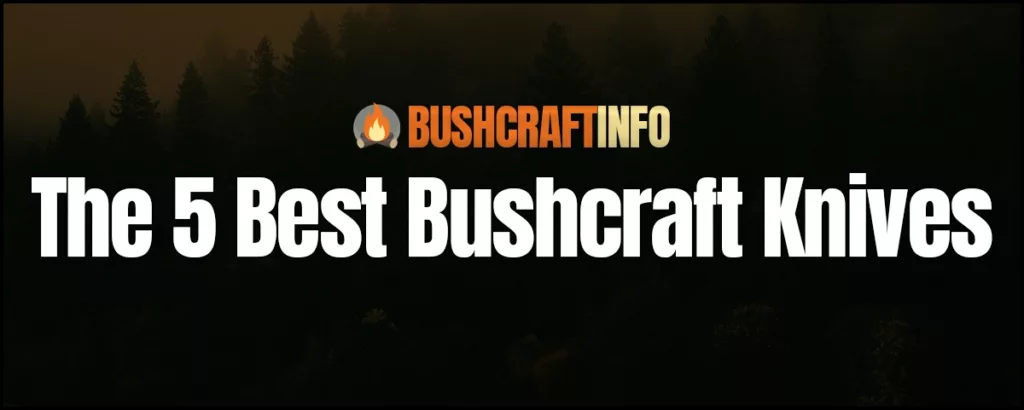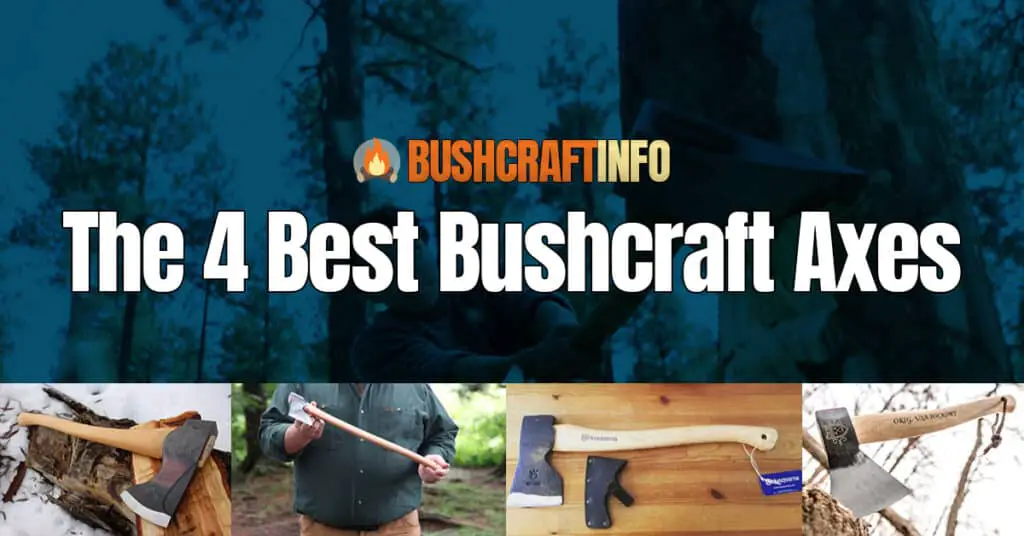A lot of beginners might be wondering about how sharp should a bushcraft knife be.
Bushcraft knives must be sharp enough to easily cut through various objects, including bushes, branches, meat, etc. At the same time, the blade should be able to withstand all kinds of rough and tough situations without breaking easily.
Yes, that’s right. A bushcraft knife needs to be able to clear out bushes effortlessly because that’s what it is made for. However, there might be some other questions on your mind related to the sharpening of a bushcraft knife and how much it needs to be.
For example, you might be wondering if it is possible to over-sharpen the knife and destroy its quality instead of making it more useful. In this article, I have explained the sharpness of a bushcraft knife from different angles, including how sharp it needs to be and why.
So, if you are interested in learning all this, then keep on reading!

How Sharp Should Your Bushcraft Knife Be?
When it comes to the question of how sharp should a bushcraft blade be, then the answer is quite simple. It depends on what you want to use the knife for.
If you want to use it for chopping down trees or bushes, then the best way to sharpen it would be to make sure that it is sharp enough to do so.
But if you just want to use it as an everyday kitchen utensil, then you don’t need to worry about it being too sharp. You can even sharpen it with a stone that will give you a nice edge but not one that is too sharp.
However, in order to learn about how sharp should a bushcraft knife be, then you will need to understand some factors that play an important role.
Steel Qualities and Hardness of the Blade
Before learning about how much you should sharpen your bushcrafting knife, you will need to understand the steep quality of the blade and how hard it is. It is because there is some steel that will not let your knife get a razor-sharp edge easily.
This is because some knife steels are harder, which makes them very difficult to sharpen. In addition to this, there are some knives that can’t hold an edge very well. Apart from that, there is one more thing that you need to keep in mind.
If the steel of the blade is super hard, it will be pretty brittle. Under such conditions, you will need to go with a steeper sharpening angle and you will need to be careful because you can easily crack or chip the knife.
Similarly, if the steel of the blade is softer, then it will let you easily sharpen it without any issue at all. You should not worry about getting a perfect edge because it will come naturally when you sharpen it properly.
How to Determine the Level of Sharpness of Bushcraft Knives for Applications
If you are still not sure how sharp your bushcraft knife needs to be, there is a quick tip that can help you. You will need to consider the main applications that you will want to achieve with your knife.
In general, a bushcrafting knife will have to face a lot of rough and tough situations. For instance, you will be using it for clearing bushes, cooking, hunting, and other such activities. For each type of activity, the sharpness of the requirement of the knife will vary. It is because some applications will need precision while others will need robustness.
Let’s take a look at some of the main types of activities where you will be using your bushcrafting knife and how sharp it needs to be.
Clearing Bushes:
If you are going to clear bushes, then you will need a sharper edge than if you were to chop down a tree. This is because you will be cutting through the branches and twigs of the bush. The thinner the branches, the easier they will cut through. Therefore, you will need a sharper blade than if you were to cut down a tree.
Cooking:
Cooking requires a good sharp edge because you will be slicing food items like vegetables and meat. However, you will also be chopping up ingredients like onions and garlic. Therefore, you will require a sharp edge on the blade.
Hunting:
When you are hunting, you will be handling knives that are used by hunters. These knives are usually made out of high-carbon steel. They are designed to withstand heavy use and abuse. Therefore, you will not need to worry about having a dull blade.
Batoning:
Last but not least, batoning is another type of activity where you will be using your bushcraft knife. For those of you who don’t know what batoning is, it is basically a technique where you will be using a knife to create holes or cuts in wood.
Therefore, you will need a strong blade. Now if the knife blade is too sharp, it will be able to produce some easy cuts but since you will be dealing with the wood, therefore, there will be a higher chance of breaking the knife blade.
In this case, the bushcraft knife needs to have a good balance of sharpness and durability at the same time.
Things to Remember While Sharpening Your Bushcraft Knife
The first thing you need to consider when sharpening a bushcraft knife is whether you want to sharpen it with a stone or not. Most people, prefer using stones to sharpen their knives since it is easier than using Waterstones.
Waterstones can get very expensive, especially, if you are planning to buy one used by professional chefs. So if you are looking for a budget-friendly option, then go ahead and try using a stone to sharpen your bushcraft knife.
A good rule of thumb is that it should be sharp enough to shave hair off your head. That means that if you were to hold the knife at a 45-degree angle against your skin and move the knife back and forth while shaving your scalp, then the knife should be sharp enough to do so smoothly. This is also known as the “hair test”.
Another thing to remember is that the sharper the knife is, the better it will perform. So if you want to sharpen your bushcraft knife properly, then you need to start with a dull knife. You can either sharpen it yourself or ask someone who knows how to sharpen them to help you out.
How sharp is sharp enough?
Now that we know how sharp the knife needs to be, let us talk about the exact amount of sharpness that it should have. The truth is that it really doesn’t matter how sharp your bushcraft knife is. What matters most is how well it performs.
So if you want to learn how to sharpen your bushcraft knife, then you should focus on honing rather than sharpening. Honing is basically sharpening with a hone like a whetstone. But unlike a whetstone, a hone does not leave any scratches on the surface of the knife.
It is important to note that honing takes time and patience. If you are new to this kind of work, then it may take you several months before you master honing. However, once you do, you will never look back.
Can a Bushcraft Knife be Too Sharp?
Yes, you can definitely say that a survival knife can be too sharp. In fact, there are many cases where people have lost their fingers because they tried to cut something with a sharpened knife. However, there is a disadvantage of making the blade of the knife too sharp.
The sharper the knife blade gets the thinner it becomes. This is very dangerous because it makes the knife vulnerable to breaking in the middle of your adventure. For instance, you might be using your knife for batoning or bush clearing and it’s not able to withstand that much use.
Therefore, you should focus on making the blade of the knife just sharp enough to pass the hair test. Also, make sure you are sharpening it at the correct angle otherwise you may ruin the quality of the blade during the process.
How to Check The Sharpness of Your Knife
Now that you have an idea about how sharp your bushcraft knife needs to be, you might be wondering how to put it to the test. In other words, you may want to know how to check the sharpness of your knife.
In order to do this, there are multiple ways. For example, the Japanese are famous for cutting paper with their knives. Now normally, if you try to cut paper with a knife, it will bend as soon as you put the edge of the knife on it. However, if the knife is sharp enough the tip of the blade will grasp the page edge as soon as it comes in contact with it.
After that, it will slice through it allowing you to cut the page directly. If your knife is able to do so, then congratulations, you have a sharp knife.
Which Sharpening Stone Should I Start?
The next thing that you might be interested in learning about is the type of sharpening stone that you need to start with. There are different types of stones available, but each one has its own advantages and disadvantages. Therefore, it is best to choose the right one depending on what you plan to use your knife for.
For example, if you are going to use your knife for woodworking purposes, then you should go for a woodcarving stone. On the other hand, if you are planning to use it for skinning animals, then you should get yourself a bone grinder.
However, if you are looking for a general-purpose sharpening stone, then you should consider getting yourself a whetstone. A whetstone is made from natural materials such as sandstone or marble. It is also known as a grinding wheel, and it is used to sharpen tools and blades.
However, when it comes to choosing the right type of stone, it all depends on your budget. You can find cheap ones, but they won’t last long. Whereas, expensive ones are more durable and therefore, they tend to last longer than cheaper ones.
Should You Strop a Survival Knife Blade?
Stropping a survival knife blade is a good idea because it keeps your blade sharp and helps you do things faster. You should always strop your survival knife blade when you need to. Otherwise, it will become dull over time.
There are two main reasons why you should strop your survival knife. Firstly, it allows you to keep your blade clean. Secondly, it prevents rust from forming on the blade. Apart from that, stropping the blade helps realign the edge of the knife allowing it to cut smoothly and easily.
I highly recommend stropping the blade each time you use it. In fact, you should make it a habit as it will help you maintain a good edge of the knife and will increase the overall durability of the blade.
Last Minute Thoughts
So how sharp should a bushcraft knife be? Well, it needs to be sharp enough to cut through various objects without putting in too much effort. While at the same time, the blade needs to be able to withstand all kinds of situations without breaking easily.
You should keep in mind the sharper the edge of the knife gets the more easily it can bend or break. You need to be careful when you are using your knife because you don’t want to damage it.
Bushcrafting knives are not only useful for hunting and cooking, but they are also great to carry around in case something happens. We hope you’ve found this article helpful and enjoyed reading it.
Please don’t forget to let us know how sharp your bushcraft knives are and what do you use them for?
Was this post helpful?

Hey I’m Josh! I have been practicing Bushcraft for a little over 6 years now! I Started this website to review awesome bushcraft gear that I love as well as share information I have learned along the way!


